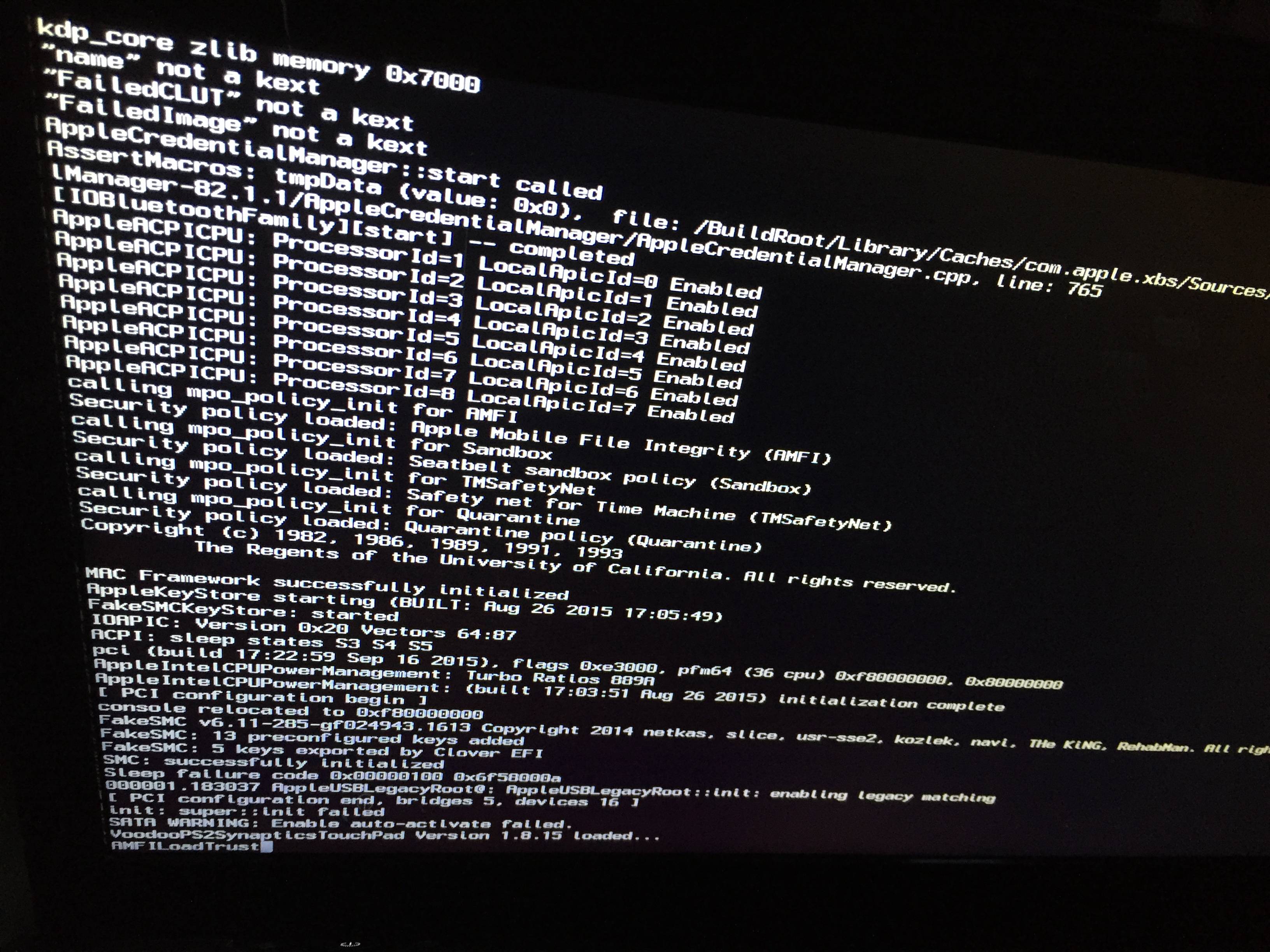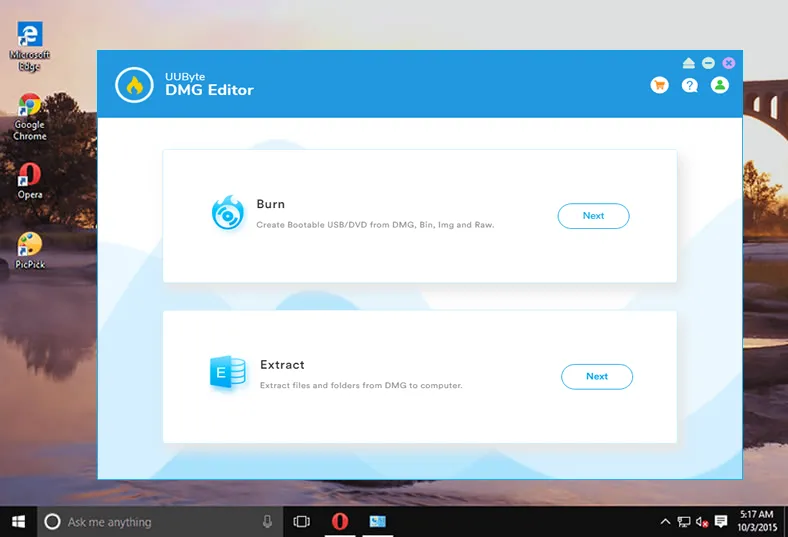Full Version Mac OS X El Capitan Free Download 10.11.6 InstallESD DMG Bootable USB Free Download Mac OS X El Capitan 10.11.6 Intel And AMD Bootable USB ISO. Download El Capitan OS X is also significant since it’s the last version of Apple Mac OS X releases as its successor Sierra was released in the year 2016 under the brand macOS. Create Bootable USB for Mac OS X El Capitan with TransMac A new pop up box will appear, click on the three-dots, and then select the macOS X El Capitan.DMG file from Windows. Then click on OK. Choose Mac OSX El Capitan DMG file. Posted November 18, 2015. Hello, I love your bootables versions of OS X, Yosemite was perfectly installed on my FusionDrive with UEFI. But I think I have a problem with the El Capitan version. With the Yosemite bootable USB untouched, Clover shows the good FusionDrive partition ' Macintosh HD'. Now it is the time to create a bootable USB installer using TransMac, To install Mac OS El Capitan on VirtualBox on Windows 10 you need a Bootable USB here you will learn the steps of creating a bootable USB installer for Mac OS El Capitan on Windows. Before going to create a bootable USB for Mac OS El Capitan you need to download TransMac.
These advanced steps are primarily for system administrators and others who are familiar with the command line. You don't need a bootable installer to upgrade macOS or reinstall macOS, but it can be useful when you want to install on multiple computers without downloading the installer each time.
What you need to create a bootable installer
- A USB flash drive or other secondary volume formatted as Mac OS Extended, with at least 14GB of available storage
- A downloaded installer for macOS Big Sur, Catalina, Mojave, High Sierra, or El Capitan
Download macOS
- Download: macOS Big Sur, macOS Catalina, macOS Mojave, or macOS High Sierra
These download to your Applications folder as an app named Install macOS [version name]. If the installer opens after downloading, quit it without continuing installation. To get the correct installer, download from a Mac that is using macOS Sierra 10.12.5 or later, or El Capitan 10.11.6. Enterprise administrators, please download from Apple, not a locally hosted software-update server. - Download: OS X El Capitan
This downloads as a disk image named InstallMacOSX.dmg. On a Mac that is compatible with El Capitan, open the disk image and run the installer within, named InstallMacOSX.pkg. It installs an app named Install OS X El Capitan into your Applications folder. You will create the bootable installer from this app, not from the disk image or .pkg installer.
Use the 'createinstallmedia' command in Terminal
- Connect the USB flash drive or other volume that you're using for the bootable installer.
- Open Terminal, which is in the Utilities folder of your Applications folder.
- Type or paste one of the following commands in Terminal. These assume that the installer is in your Applications folder, and MyVolume is the name of the USB flash drive or other volume you're using. If it has a different name, replace
MyVolumein these commands with the name of your volume.
Big Sur:*
Catalina:*

Mojave:*
High Sierra:*
El Capitan:
* If your Mac is using macOS Sierra or earlier, include the --applicationpath argument and installer path, similar to the way this is done in the command for El Capitan.
After typing the command:
- Press Return to enter the command.
- When prompted, type your administrator password and press Return again. Terminal doesn't show any characters as you type your password.
- When prompted, type
Yto confirm that you want to erase the volume, then press Return. Terminal shows the progress as the volume is erased. - After the volume is erased, you may see an alert that Terminal would like to access files on a removable volume. Click OK to allow the copy to proceed.
- When Terminal says that it's done, the volume will have the same name as the installer you downloaded, such as Install macOS Big Sur. You can now quit Terminal and eject the volume.
Use the bootable installer
Determine whether you're using a Mac with Apple silicon, then follow the appropriate steps:
Apple silicon
Bootable Os X El Capitan
- Plug the bootable installer into a Mac that is connected to the internet and compatible with the version of macOS you're installing.
- Turn on your Mac and continue to hold the power button until you see the startup options window, which shows your bootable volumes.
- Select the volume containing the bootable installer, then click Continue.
- When the macOS installer opens, follow the onscreen instructions.
Intel processor
- Plug the bootable installer into a Mac that is connected to the internet and compatible with the version of macOS you're installing.
- Press and hold the Option (Alt) ⌥ key immediately after turning on or restarting your Mac.
- Release the Option key when you see a dark screen showing your bootable volumes.
- Select the volume containing the bootable installer. Then click the up arrow or press Return.
If you can't start up from the bootable installer, make sure that the External Boot setting in Startup Security Utility is set to allow booting from external media. - Choose your language, if prompted.
- Select Install macOS (or Install OS X) from the Utilities window, then click Continue and follow the onscreen instructions.
Learn more
A bootable installer doesn't download macOS from the internet, but it does require an internet connection to get firmware and other information specific to the Mac model.
For information about the createinstallmedia command and the arguments you can use with it, make sure that the macOS installer is in your Applications folder, then enter the appropriate path in Terminal:
2015-11-01 How to create El Capitan 10.11 USB installer Windows No Mac.
Kernels_10.11, Kernels_10.11.1, config.plist sample, HFSPlus.efi, NTFS.efi.
09/20/2015 New way to create Yosemite 10.10.5 USB installer here.
12/22/2014 A new version of tutorial is here – Now we only need 1 8GB USB flash drive instead of 3. But we need the download the Paragon Partition 14 free edition in addition to transmac.
For Yosemite – this boot flag must be inserted in the argument – Actually, for all OS X version, just add this boot flag
kext-dev-mode=1
Patched Kernels for Yosemite and Mavericks.
If you use Clover bootloader – to patch on the fly (no need patched kernel) for the kernel panic early reboot (most HP laptop), put the lines in the clover config.plist file – remove the “!”
KernelAndKextPatches
<!dict> Minitool partition wizard 12 pro full key.
<!key>KernelPm<!/key>

<!true/>
<!/dict>
2014-07-27 A new version of tutorial is here – 28 minutes long but step by step from beginning to end.
Both Clover and Chameleon bootloaders – 34 minutes.
The Clover Boot partition idogclover14 files.
Yes, someone asked me about installing Mac OSX Mavericks 10.9.x on Windows 8 PC and Laptop without having a MAC to do all the preparation. There are tons of tutorials out there, but none are clear and proven working on newer laptops. This is the way I do it proven with real installation.
1. Download Mavericks 10.9.2 currently in the Apps store or internet somewhere if you don’t have an account with Apple. I don’t even know if you can download the Mavericks App if you don’t have a mac even if you have the account with itunes. Anyhow, you have to figure it out to obtain either an original Mavericks App or InstallESD.dmg.
2. You need 7zip to extract all these compress files in the Mavericks App, BootDiskUtility, Transmac, Chameleon Bootloader and Chameleon_BS.
Os X El Capitan Bootable Usb From Windows 10
3. 3-4 usb flash drives: 2 x 2GB minimum + 1 8gb for full OS X Base System
Problems:
1. Most of tutorials out there use Transmac to create the OS X BASE installer which fails due to Windows files structrures.

2. The OS X BASE extracted from Windows doesn’t include the “Packages” folder that install important files for MAC OSX.
3. BootdiskUtility is a great program that can restore 3.hfs OS X BASE System file with correct aliases, but locks the partition at 1.2GB which is not enough space to copy “Packages” folder (4.5GB) data to.
Solutions:

1. Use BootDiskUtility to create 2x 1.2GB USBs OS X BASE Systems – Use Transmac to copy mach_kernel to make it boot and installable without “Packages”. Use Multi Patitioning option and change the size of the boot partition to your liking, 64MB default is plenty for Chameleon, but you can change to 128-356MB if the Extra folder is big. There will be 2 partitions created, boot and the rest (depend on your USB size).
Select Part2 and click “Restore Partition” to select 3.hfs (1.2GB) OS X Base System file to restore.
Use Transmac to copy mach_kernel to the OS X Base System root.